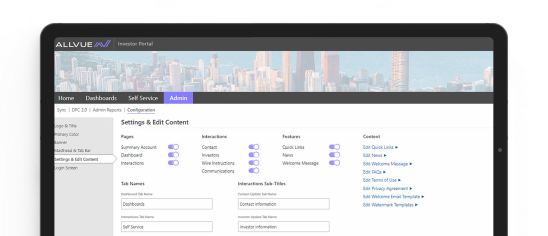
By: Kimberly Kale
Head of Product - Back Office
January 5, 2022
If you’ve realized your current private equity software system won’t be able to support your firm’s anticipated growth, you may have already begun the due diligence stage of evaluating a new accounting/CRM/investor portal. Visions of a humming back office, a portal that LPs love, and a CRM that keeps everyone on the same page drive the selection process.
While everyone gets excited about potential improvements, the big challenge and concern that’s also top of mind is the implementation. This step alone can deter many firms from making a change even if they understand the benefits. The difference between smooth sailing and what can feel like running through mud can be as simple as prioritizing the right prep work.
The reality is, it’s never too early to start thinking about implementation. Taking a hard look at your current software system, processes, and people ahead of time can save many hours of frustration down the road.
Asking certain questions is a good way to get started:
- Who’s going to be involved?
- What’s the current state of my information?
- How will we measure success?
- How hands-on, or off, will I need to be?

By the end of 2022, 86% of organizations are expected to rely almost exclusively on SaaS solutions to run their businesses.
Source: BetterCloud
I’ve worked to shift many clients from desktop applications like Excel as well as from other vendors’ systems. Here are a few best practices I’ve found can make your implementation run more efficiently:
Understand the Needs
This might seem like an obvious statement, but the reality is, separating the “must have” from the “nice to have’” will help define the scope of what should be done, and when. Often, a phased approach will allow you to stay on budget and on your desired timeline.
Masking wants as needs will confuse the implementation – and may end up pushing it in the wrong direction. A little honest homework upfront should have significant benefits down the road.
READ MORE: Why upgrading your PE software stack doesn’t have to be risky or costly
Set the Goal(s)
Isn’t “setting the goals” part of “understanding the needs”? Not exactly.
In software terms, understanding the needs is defining the business requirements, while goals define how the system is going to meet those needs. Shifting goals during implementation can quickly bog down the process. Be honest and clear with your vendor up front so that everyone is moving toward the same target. The most successful organizations are the most cohesive – bonded by a single mission statement. Implementations are not that different.
Communicate, communicate, communicate
It can’t be said enough – communication between the trifecta of management, staff, and vendor is paramount to successful implementation. Despite everyone’s best intentions, sometimes needs and goals can change. In those circumstances, it’s important to bring everyone together to establish the new target and roadmap, ensuring all parties are aligned moving forward.
READ MORE: Excel Increases Operational Risk for GPs
Most likely, there are very few scenarios a well-established vendor hasn’t already experienced, so it’s good to draw on that knowledge base when possible. Ultimately, you know your environment and the vendor knows theirs, so try to meet in the middle for the best results.
Many of the firms we work with don’t know what to expect from their implementation, and that’s understandable. Even with all good intentions at the onset, things can start to move sideways quickly. Thinking honestly about your current situation, setting realistic expectations, keeping the goalposts fixed, and maintaining communication with your vendor can go a long way to keeping you out of the mud.
More About The Author

Kimberly Kale
Head of Product - Back Office
Kimberly is responsible for back office product management at Allvue. She joined Allvue’s predecessor, AltaReturn, in 2009 and has over 25 years of software management, including 18 years servicing the alternative investments industry. Prior to joining AltaReturn, Kimberly spent seven years with FIS/Investran, first in New York, and then transferring to London to manage the EMEA implementation team. She began her career at KPMG Public Services practice in Washington, DC, and moved on to implement ERP solutions for various insurance and healthcare clients. Kimberly holds a Bachelor’s degree from Vanderbilt University and is currently based in Allvue’s Miami headquarters.



